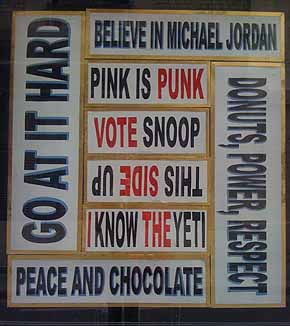True or False?
What you’ll remember from a meeting, without any other recall activity, is about ten percent of what is said.
Here’s the breakdown…
Fifty percent of what gets said in a meeting is missed by one or more parties to start with. Eighty percent of what isn’t missed will be forgotten in forty-eight hours.

I bet you said “true.”
I made this up. Which seems to be what everyone else does, too. But if it is even close to true, it means you better record what happens in important meetings, because otherwise you’ll miss a ton. I have never used an audio-recorder at a sales meeting with a client; it might make folks uncomfortable. (It didn’t do Richard Nixon any favors.) But given how much of what happens in a meeting ends up being lost forever, it certainly seems like a good idea.
The discipline of capturing key thoughts, questions and ideas is critical to making the most of a meeting with a potential client. Yet there is a paradox to note taking. Pay too much attention to your notes and you lose contact with your client. A space in the conversation while you scribble on your pad is awkward. How to take notes but not take notes?
Here are some tips:
Divide the page: Spatially locate areas on your note pad for different things.
This makes your notes easier to use during the meeting. I record ideas on the right side of the page, and follow up questions on the left, that way I know where to look depending on what part of the meeting I’m in. When the conversation naturally lulls, I can peek at the left side of my note page, and say “Let me ask you another question about your push into the Canadian market…”
Organizing my notes spatially makes it easier to recall what my notes mean, and allows me to write fewer words. If I know the right bottom corner is “reasons to follow up,” I don’t need as much information to remember. One or two key words should be enough.
Learn to write legibly while not looking at the page.
If I want to remind myself to ask about their Los Angeles operation, and I have a space on my page for information gathering questions, scribbling ‘LA’ in that spot is probably enough to jog my memory. I can write a legible ‘LA’ while still listening and looking at the person across from me. The key is to write just enough so I’ll remember the point of the note for at least a couple of hours.
A couple of hours?
Rewrite your notes in more detail within a couple of hours of the meeting.
Ideally, I do it right after, or on my way home on the train. Do it soon. The longer I wait the more gibberish will mysteriously appear on the note page.
Mine your notes.
These rewritten notes have embedded in them dozens of reasons to make purposeful contact with your client again. I use these to avoid the “just calling to check in” super lame voice mail message.
Your notes are a tool with two masters. The first is to make the meeting effective and efficient. They allow you to smoothly return to a topic that was discussed earlier with a key follow up question. The second is to mine your notes after the meeting for key client problems, and personal and professional reasons to follow up. They are the gold nuggets from which a relationship is built. The trick is to actually write as little as possible during the meeting, but still have the notes be useful to you.
[…] better. Bringing a second person to your meeting to be the note-taker or developing symbols; or organizing your note spatially so different quadrants on the page are reserved for different things, are all techniques so you can […]